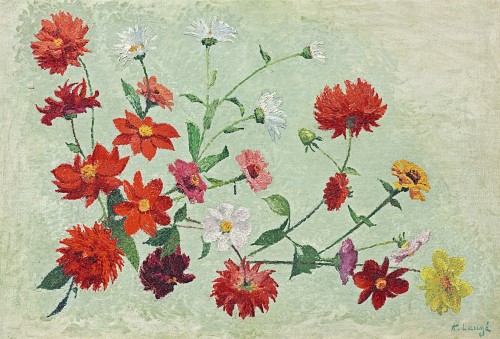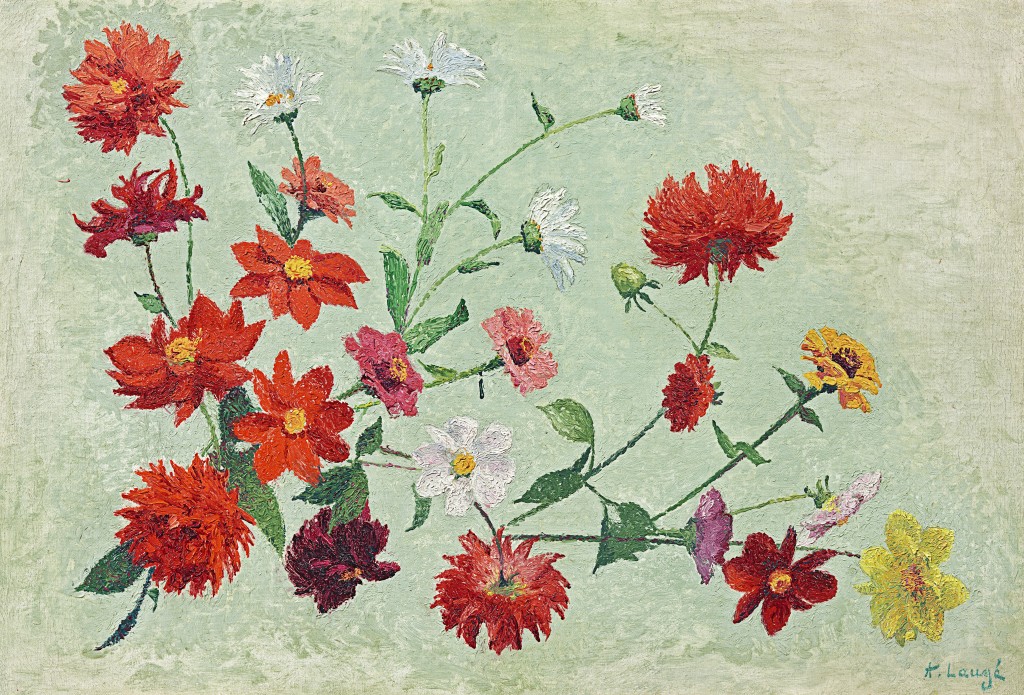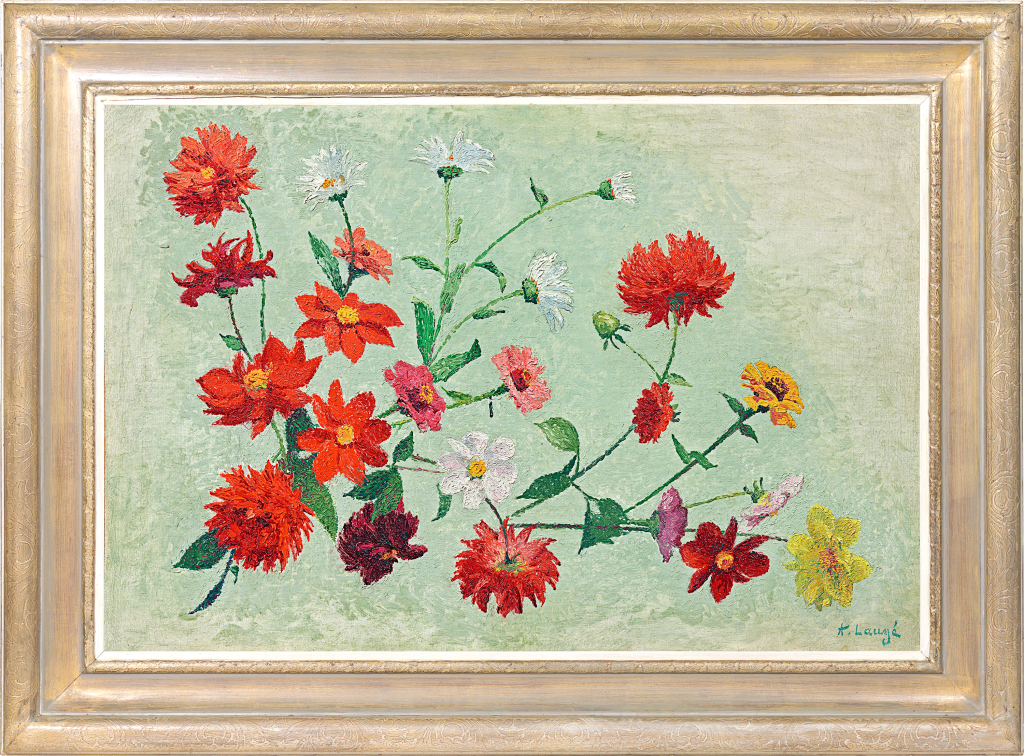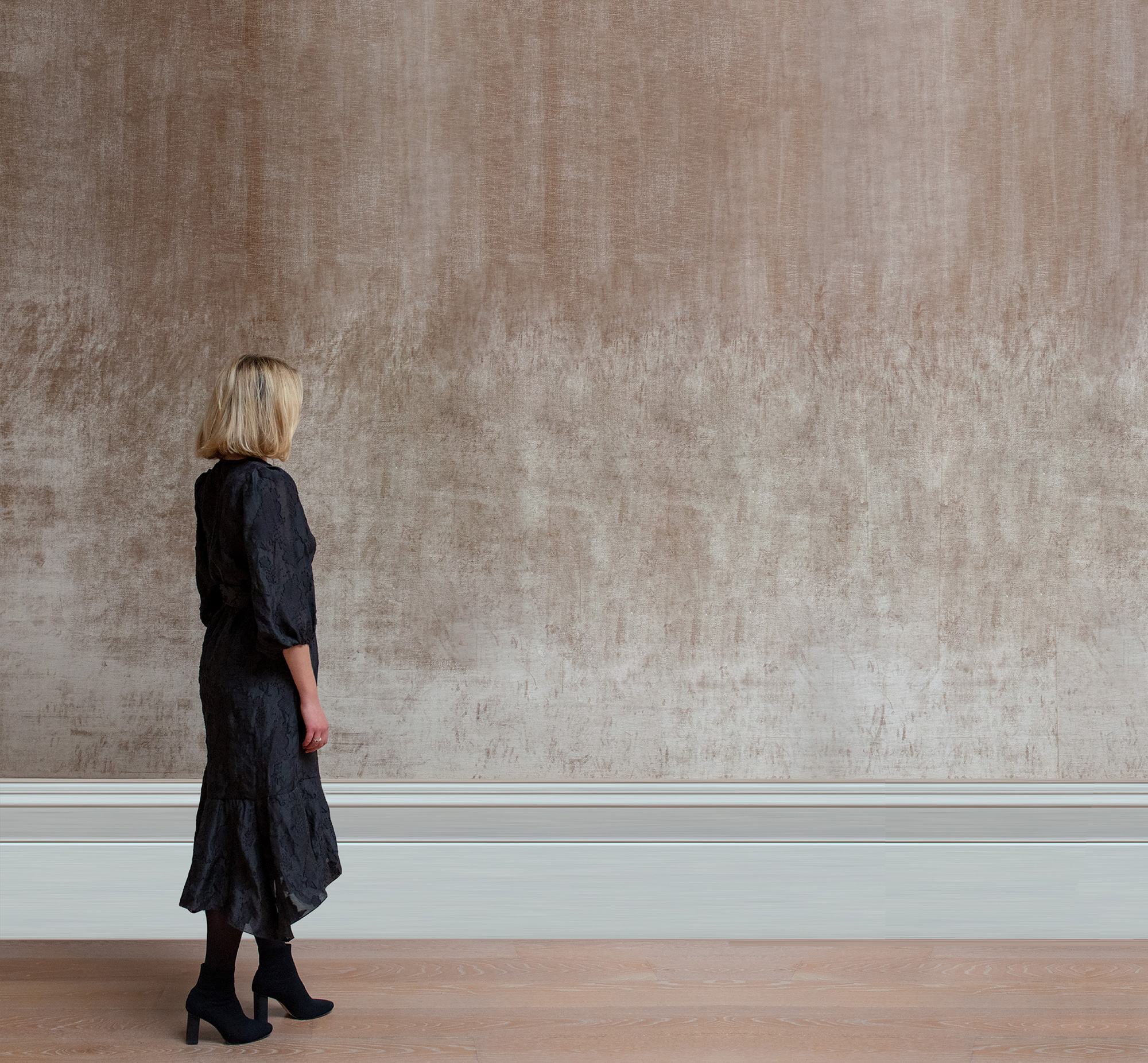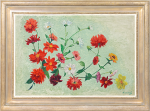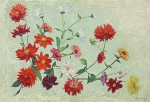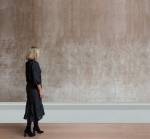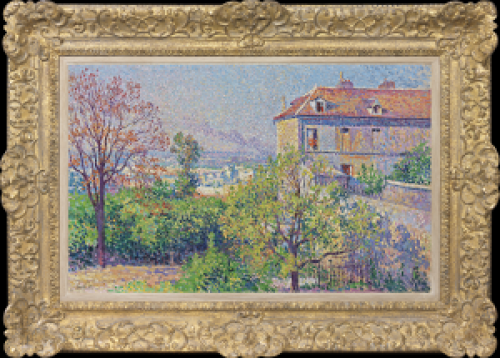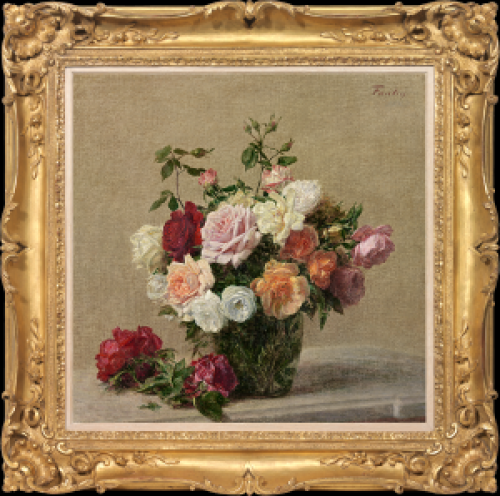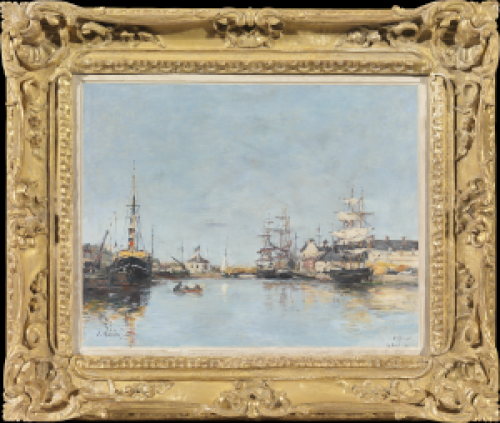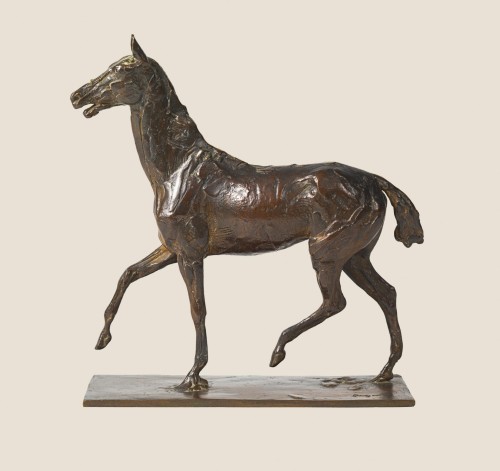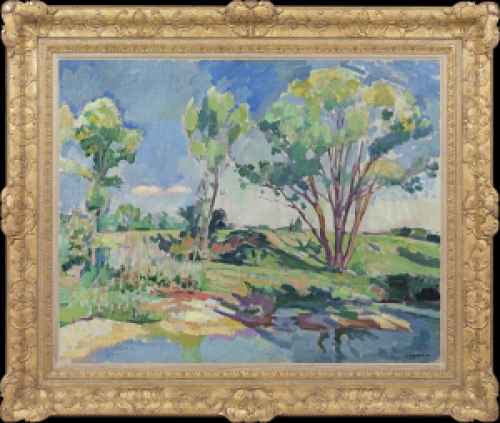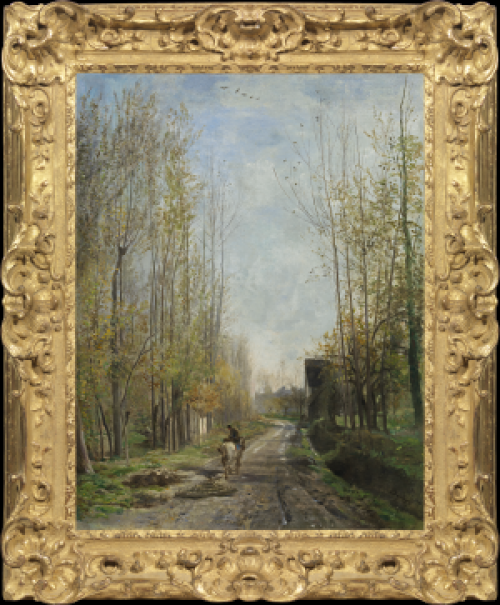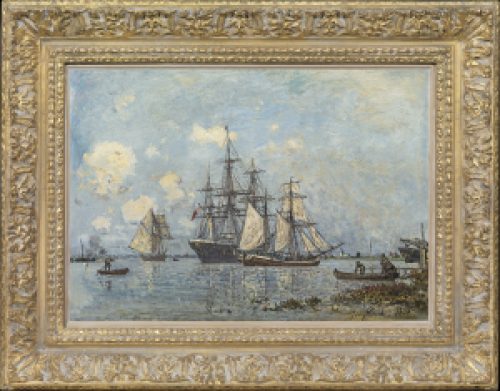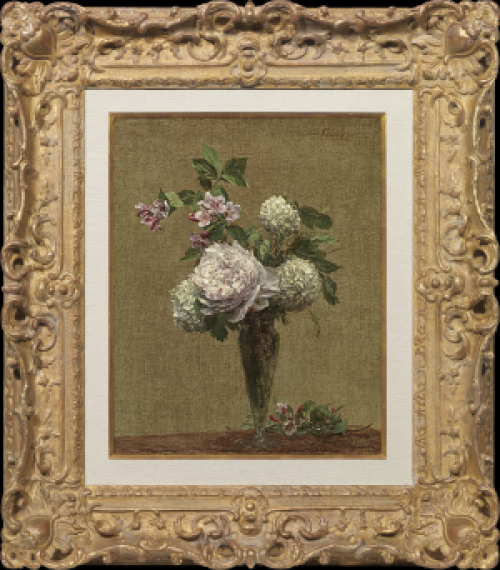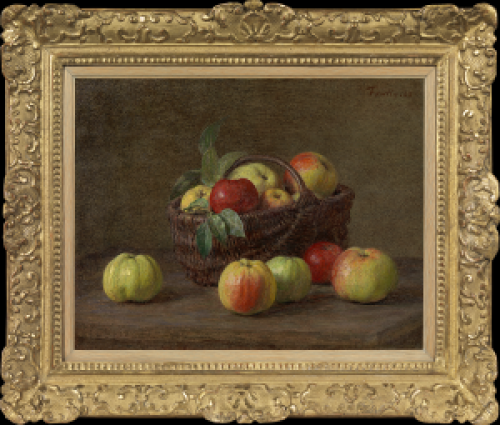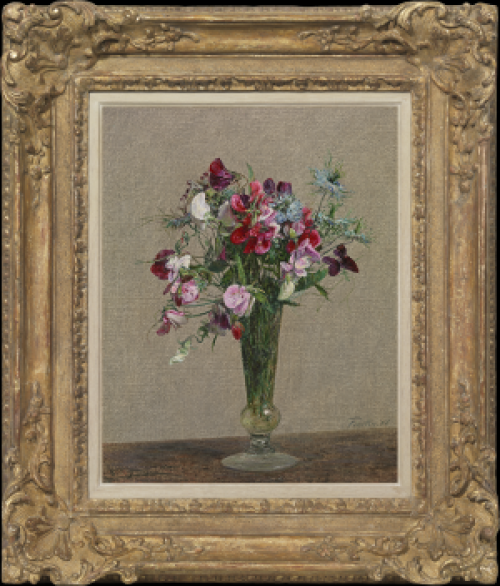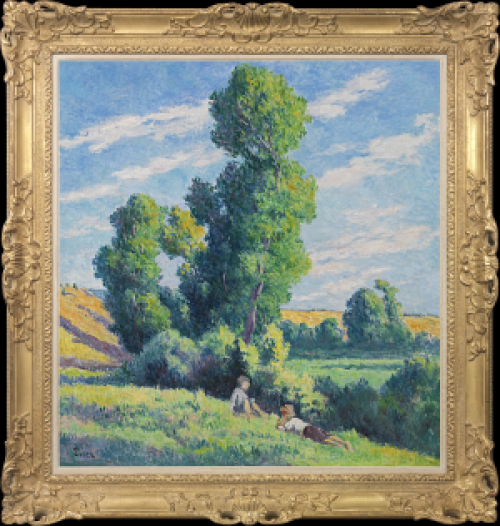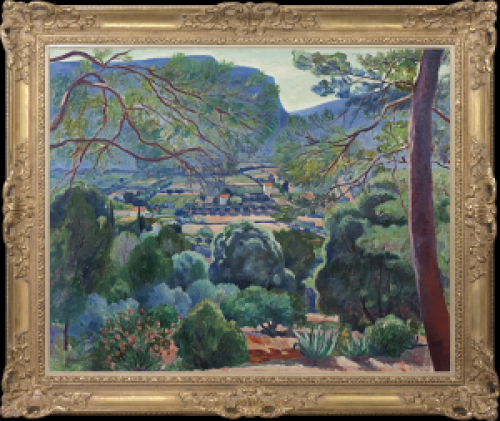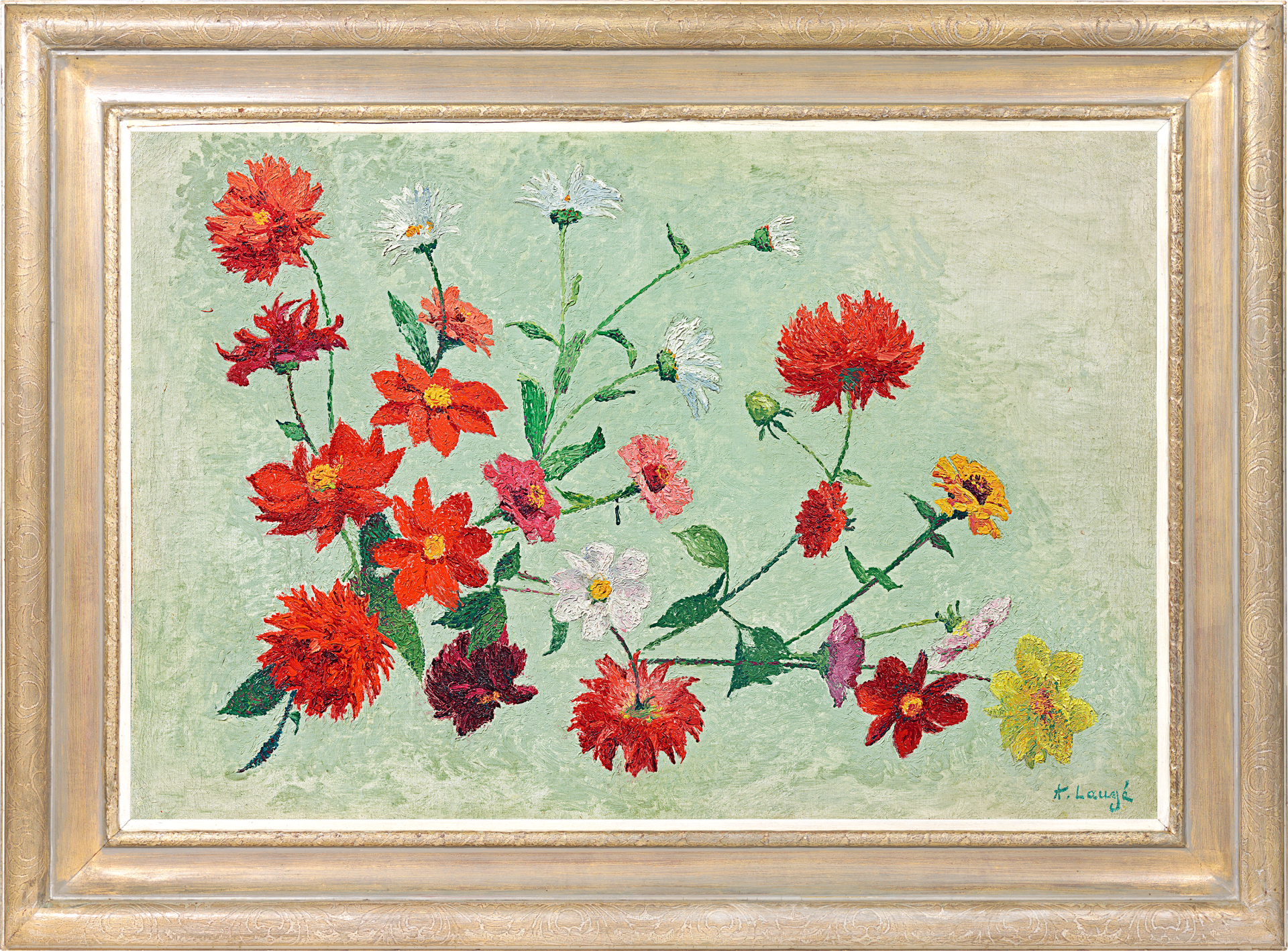ACHILLE LAUGÉ
Arzens 1861 - 1944 Cailhau
Ref: CA 131
Dahlias and marguerites
Stamped with the signature lower right: A. Laugé
Oil on canvas: 19 ¾ x 28 ¾ in / 50.2 x 73 cm
Frame size: 27 x 36 in / 68.6 x 91.4 cm
Painted circa 1916-19
Provenance:
Commissioned by Monsieur Léon Castel, Mayor of Lézignan-Corbières and Député of l’Aude, as part of the decoration of his Château de Gailhadet, near Mirepoix
Saint-Brieuc Hôtel des Ventes Mobilières, Saint-Brieuc, 8th April 1979, lot 143;
private collection, France;
Tajan, Paris, 20th June 2001, lot C;
private collection, Austria
To be included in the forthcoming catalogue raisonné of the work of Achille Laugé being prepared by Nicole Tamburini
The son of prosperous farmers, Achille Laugé spent his childhood in the village of Cailhau in Languedoc, not far from Carcassonne. After nearly a decade in Paris, he returned to Carcassonne in 1888 and seven years later settled in Cailhau, where he remained for the rest of his life. The rolling, sun-soaked landscape of Cailhau, with the snow-capped peaks of the Pyrenees rising in the distance, was the inspiration for Laugé’s finest landscapes.
Influenced by Seurat, Laugé composed his pictures with a modified Pointillist technique from 1888 to the mid-1890s. Thereafter he employed careful, cross-hatched brushstrokes. By 1905 he was applying pigments with a greater expressive freedom, using enlarged strokes and a thick impasto that brought him closer to traditional Impressionism.
In 1916 Laugé was staying at Alet-les-Bains south of Carcassonne, when he was commissioned by Léon Castel, Mayor of Lézignan-Corbières and Député of l’Aude, to decorate his Château de Gailhadet, near Mirepoix. This delightful assemblage of Dahlias et marguerites formed one of twelve floral canvases destined for the salon, hallway and dining room of the château. The scarlet, gold and white blooms fan out against a gentle, spring green background, twisting in space. Laugé builds up the flowers with a myriad of delicate brushstrokes, giving each a sculptural solidity and a distinct personality.
ACHILLE LAUGÉ
Arzens 1861 – 1944 Cailhau (Aude)
Achille Laugé was born in Arzens in the Aude region of southern France, at the foot of the Pyrenees. His parents were prosperous farmers who moved to the village of Cailhau near Carcassonne, where he spent most of his life. Apprenticed in 1878 to a pharmacist in Toulouse, Laugé studied painting part-time before going to Paris in 1881. He studied with Alexandre Cabanel and Jean-Paul Laurens at the Ecole des Beaux-Arts. Antoine Bourdelle, whom he had known in Toulouse, introduced him to Aristide Maillol ; the three remained close friends.
In 1888 Laugé returned to Carcassonne, but kept his Parisian contacts. He exhibited at the Salon des Indépendents in 1894 and at an exhibition in Toulouse the same year in the company of the Nabis and Toulouse-Lautrec. The following year Laugé returned to Cailhau, where he spent the rest of his life. He had several one-man shows in Paris from 1907 to 1930.
In his earlier works Achille Laugé is clearly influenced by the work of Georges Seurat, whose controversial painting La Grande Jatte was exhibited in Paris in 1886. From 1888 until about 1896, Laugé composed his pictures with small points of colour. However, he appears never entirely to have accepted Seurat’s scientific approach to painting, choosing instead to concentrate on the primacy of colour rather than a strictly Pointillist approach. By the end of the nineteenth century Laugé had abandoned dots and dabs and painted his landscapes, portraits and still lifes with thin, systematically placed strokes resembling crosshatching.
After 1905 Laugé applied his pigments more freely, with enlarged strokes and thick impasto that brought him closer to a traditional Impressionist technique whilst maintaining his ability to paint the translucence of southern light. Laugé was, at heart, a plein air painter, travelling around in his roulotte-atelier, a glass-sided studio on wheels, which allowed him to paint in all weathers and at all seasons. The countryside of the Languedoc was the inspiration for most of his work.
The work of Achille Laugé is represented in the Musée d’Orsay, Paris; the Musée Bourdelle, Paris; Musée Petiet, Limoux; the Musée des Beaux-Arts, Carcassonne; the Petit-Palais, Geneva and the Musée de Grenoble.

